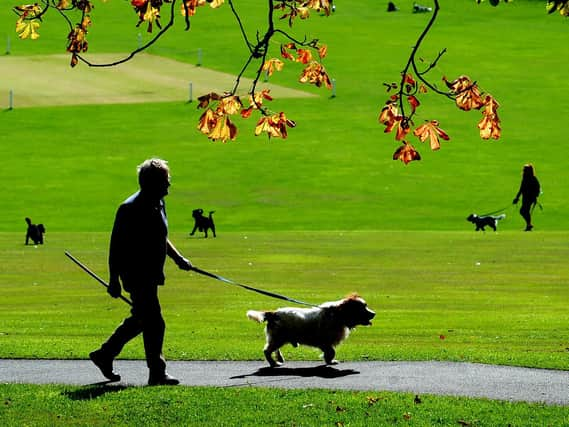Dog killed by pesticide combination found in poisoned birds of prey known as 'Nidderdale Cocktail'


A dog walker noticed both their two dogs had become ill while out on a walk in Pateley Bridge back in April, police said, one of which was so severely ill she did not recover.
Tests on the dog which died found a cocktail of pesticides - which police have nicknamed the "Nidderdale Cocktail" due to being commonly found in birds discovered poisoned in the area - inside her body.
Advertisement
Hide AdAdvertisement
Hide AdNorth Yorkshire Police is now appealing for information on the poisonings, following test results which discovered the presence of four pesticides.


Samples taken from the dog which died showed a "significant quantity" of Bendiocarb in its system, along with smaller quantities of Chloralose, Isofenphos and Carbofuran. The tests concluded that exposure to these pesticides most likely caused this dog’s death and the severe symptoms suffered by the second dog.
Police said the same combination of four poisons have been found to cause the deaths of two red kites and a buzzard in Nidderdale since 2016, with other cases of poisoned birds of prey in the area also involving one or more of the chemicals involved.
Speaking to The Yorkshire Post in May, Rural Taskforce Inspector Matt Hagen said: "We recently had two dogs poisoned in Pateley Bridge, one of whom sadly died. This is still being investigated, but it happened in an area known as a hotspot for these crimes.”
Advertisement
Hide AdAdvertisement
Hide AdFollowing the recent test results, searches were carried out in the area Natural England and the RSPB, although none of these searches resulted in any further evidence as to how these poisons reached the two dogs.


Insp Hagen has now said they were continuing to investigate how these pesticides were left in a place where they could be found by animals.
He said: “The fact we have seen this same combination of chemicals, the ‘Nidderdale cocktail’ as it is sometimes known, also cause the death of birds of prey in this same location would indicate that the poisons have been deliberately left in a place where they could be found by wildlife and unfortunately in this case, domestic pets.
“Pesticide abuse of any kind will not be tolerated and we are doing everything we can to try and find those responsible.”
Advertisement
Hide AdAdvertisement
Hide AdMark Thomas, Head of Investigations at the RSPB, said: “Nidderdale is surrounded by grouse moors and sadly we know from experience, and from the government’s own data, that there is a strong correlation between raptor persecution and driven grouse shooting.


"Carbofuran is one of the most commonly-abused substances in the poisoning of birds of prey. It is a highly toxic, banned substance, putting wildlife, pets and people at risk. This is not the first time harmful substances have been found left out in the open and sadly it is unlikely to be the last.
"This reckless and irresponsible behaviour, which had led to the death of a beloved family pet, cannot be allowed to continue.”
Whilst Chloralose is licenced for use in England in a low concentration as a rodenticide, Bendiocarb, Isofenphos and Carbofuran are all banned from use in the UK.
Advertisement
Hide AdAdvertisement
Hide AdPolice added that "none of these chemicals should ever be used in an environment where domestic animals or wildlife should come into contact with them".
Anyone with information on the poisoning should contact North Yorkshire Police.